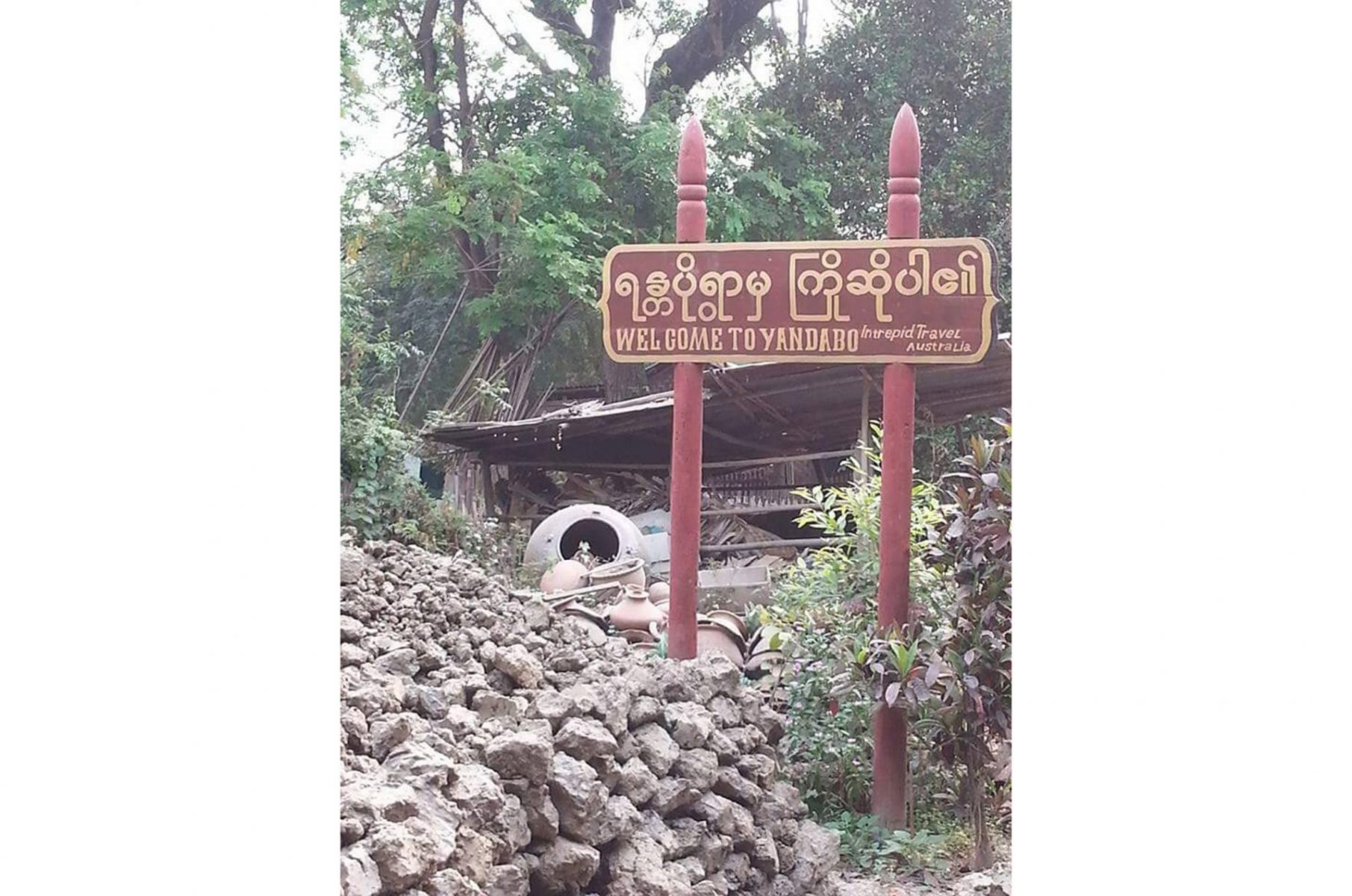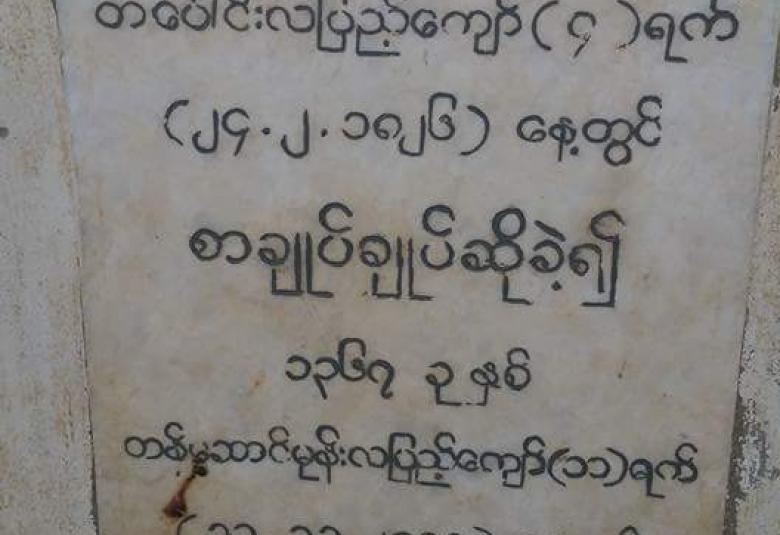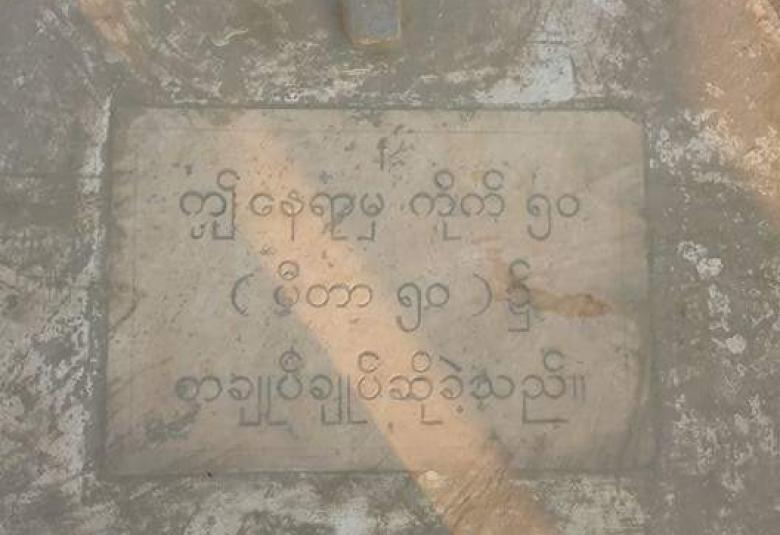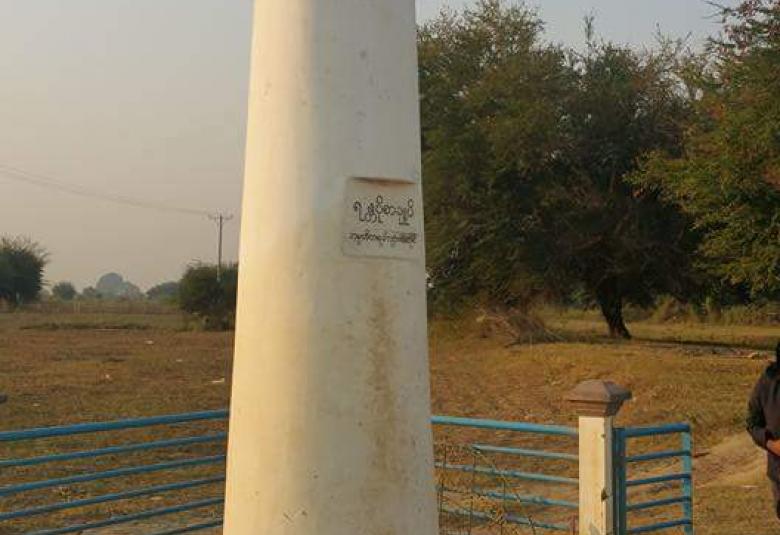By Maung Tha (Archaeology)
Yandabo, the historic village beyond Myaung Town and Hsimeekhon Village, takes a position on the eastern bank of Ayeyawady River, 40 miles south of ancient Inwa city and six miles upstream of Myingyan.
Yandabo Village, significant area for pottery industry in successive Myanma monarchical eras, was famous for signing the treaty to surrender the war against British. Globetrotters make trips to Yandabo along the waterway so as to observe Yandabo pottery industries and Yandabo monument.
It was well-known that British bully forced Myanmar to sign Yandabo Treaty. As a ceasefire treaty for the first Anglo-Myanmar war, the treaty signed in Yandabo Village was known as Yandabo Treaty in the history.
First Anglo-Myanmar War
Myanmar fought against British colonialists in wars for three times. The first Anglo-Myanmar war occurred in the reign of King Sagaing from 5 March 1824 to 1826, based on dispute over Shinmaphyu Island. In the war, Myanmar was defeated by British because Myanmar did not have capacity to keep abreast of British in arms and technology. As such, Myanmar left Rakhine, Taninthayi and Manipur regions. In the war, Supreme Commander General Maha Bandoola was dead in Danugyu battle. In encountering British colonialists who attempted to establish a great empire, Myanmar did not have capacity to shoulder with military upper hand of British.
Myanmar and British had not smoothened relations since the reign of King Badon due to Rakhine-Chittagong border problems. Manipur Chieftain Majit Singh did not attend the royal consecration ceremony of King Sagaing. As such, Myanmar assumed absent attendance of Majit Singh to the royal ceremony showed his act to rebel against Myanmar. It was a root cause of breaking out the war. King Sagaing sent his troops to Manipur, so Majit Singh and his troops fled to Cachar.
Cachar Chieftain Govinda Chandra asked help from British as troops of Majit Singh entered his area. Myanmar deployed its troops in Silahat and Assam border line in November 1823. Hence, British were worried about falling of Cachar into the hand of Myanmar. As British calculated that if Cachar fell, Myanmar would easily attack eastern Bengal. So, British occupied Cachar and declared Cachar was its under control. In 1823, Myanmar troops attacked Majit Singh’s troops in Cachar where clashes happened between Myanmar and British.
At that time, British stationed on Shinmaphyu Island at the mouth of Naff River, so Myanmar occupied the island. The Governor-General of India demanded Myanmar to hand over the island to British. Myanmar arrested two British officers who were sent to carry out border affairs and attacked Cachar.
Due to Cachar issue, Governor-General Lord Amherst declared war with Myanmar on 5 March 1824. A total of 11,500 soldiers led by British General Sir Archibald Campbell marched to Yangon along waterway. The British water borne troops occupied Manaung Island, Mawtinsoon and Hainggyi Island.
Myanmar Supreme Commander General Maha Bandoola supplicated to King Bagyidaw, saying that although Myanmar conquered over Chittagong and Panwa, enemies would not be stable. It was expected they might disturb Hanthawady-Yangon. It should assign powerful ministers in Hanthawady. So, King Bagyidaw assigned Minister Thadoe Mingyi Maha Minkhaung and Minister Thadoe Maha Thenapati on 7 May 1824.
On 10 May 1824 when British troops arrived in Yangon, Myanmar deployed its strengths just for protecting the city, so they retreated to Kyimyindine where they built a fort. When General Maha Bandoola controlling his troops arrived at Yangon front line in a short time, Myanmar troops violently attacked British ones. Due to lack of ability to compete with arms of British, Myanmar troops led by Maha Bandoola retreated to Danubyu. Then, he fell in Danubyu Fort on 1 April 1825.
After General Maha Bandoola had fallen, Myanmar troops retreated to upper Myanmar. British troops on land and along waterway marched to upper Myanmar. Both sides engaged each other near Pyay. But, Myanmar withdrew from Pyay and attacked British near Wethtigan again. Five British officers including a British colonel and soldiers fell in Wethtigan battle. However, British strongly counterattacked Myanmar.
After Pyay and Wethtigan had fallen, Myanmar fought against British troops in Myede, Malun, Bagan, NyaungU and Hsimeekhon. On arrival at Yandabo, Myanmar government sent Dr Judson and Dr Price to British troops for negotiating ceasefire.
The Myanmar side led by Lekaing Governor Minister Mingyi Maha Minghla Kyawhtin and Granary Minister Mingyi Maha Minhla Thiha Thura met with Sir Archibald Campbell and officers from British in Yandabo Village where they signed the ceasefire agreement called Treaty of Yandabo but referred to by British as Treaty of Commonwealth.
The Treaty of Yandabo was signed by Lekaing Governor Minister Mingyi Maha Minghla Kyawhtin and Granary Minister Mingyi Maha Minhla Thiha Thura and General Sir Archibald Campbell, Civil Commissioner Robertson and Naval Captain Richard Bergh. According to the treaty, Myanmar firstly released its territories to invaders.
Treaty of Yandabo
The treaty comprised 11 paragraphs mentioning that Myanmar king missed chance to govern Assam while British occupied Rakhine leaving Mawtinsoo as border. British also occupied Taninthayi with Thanlwin River as boundary line. Moreover, Myanmar signed the treaty to give one crore kyats to British as war compensation.
Following is the summery mentioned as eleven points in the treaty. They were:
British and Myanmar should practise ceasefire of the war and establish friend relations in successive eras. Myanmar king should miss chance to interfere in Assam, Cachar and Manipur states. If Gambhir Singh wished to govern its area, Myanmar king did not have chance to disturb him. British would govern Rakhine, Yanbye, Manaung and Thandwe in Rakhine region with the border line to Mawtinsoon Pagoda. Those who were appointed by Myanmar King and British had to decide right solutions for boundary affairs. Those appointed had to be officers or counsellors.
Myanmar king ceded Ye, Myeik, Dawei and Taninthayi of Taninthayi coast as well as islands in the seas to British. Thanlwin River would be border. Myanmar king had to pay one crore of coins in Myanmar kyats as war compensation to British. Action should not be taken against defectors from both sides to each other.
As part of cementing friendly relations, 50 troops led by an officer with full military equipment appointed by British would be assigned in Myanmar royal palace whereas 50 troops led by Myanmar officer in capital of British company. They had to buy or build houses for their residences in relevant areas. Both sides had to sign agreements to solve problems on commercial trading process. The property of dead persons without successors had to be handed over to respective authorities.
All walks of life had to pay debts borrowed before the war without fail. Any British or Myanmar did not have to seize other’s property. Vessels of both sides had chance to stand tall without any disturbances at ports not only in Myanmar territory but also in British one. The king of Yodaya which established relations with British would include the programme of the treaty of commonwealth. The treaty had to be signed and sealed by Myanmar officials. British and American detained by Myanmar had to be handed to British diplomats. The treaty signed by the governor of British company in India would be handed over to Myanmar king in same month. All Myanmar troops detained by British had to be handed over to Myanmar king as soon as possible.
Myanmar people had fought against British for regaining it lost territorial areas for 122 years. And then, Myanmar regained its independence in 1948.
Anglo-Myanmar wars showed Myanmar people should establish a firm, modern force so that aliens cannot disturb the State. The Yandabo Monument erected in Yandabo Village was evidence that colonialists signed a bullying treaty over Myanmar. As such, historic Yandabo monument highlights the important role of national unity.
(Translated by Than Tun Aung)
References:
History of Anglo-Myanmar war (Natmauk Phone Kyaw)
Myanmar Encyclopaedia Volume XI
Treaty of Yandabo





